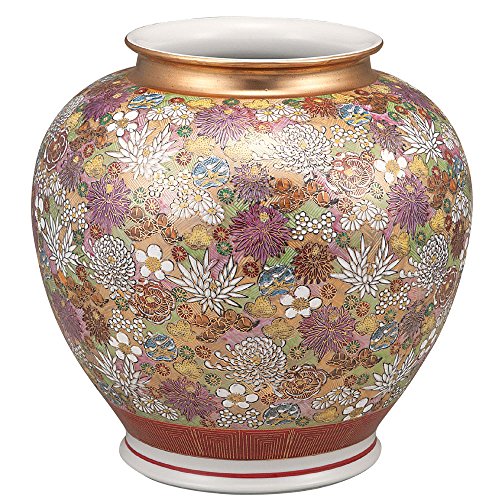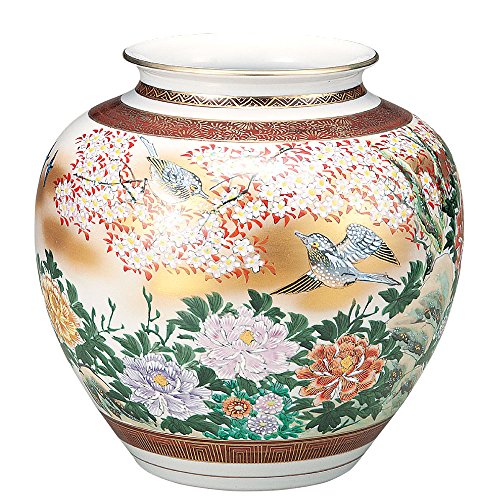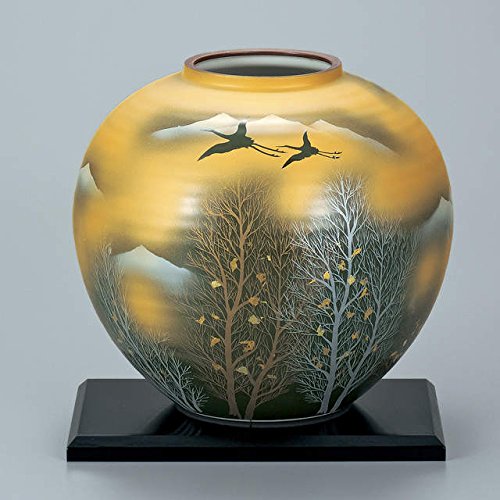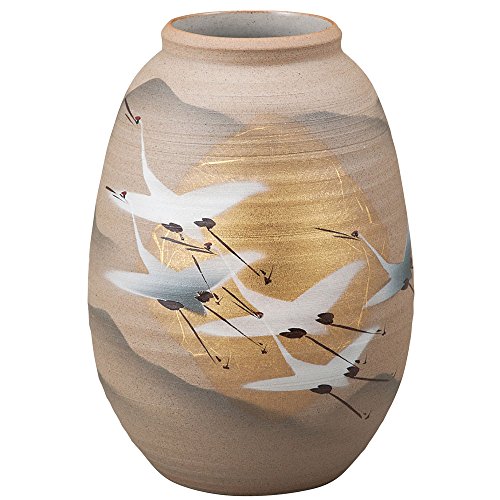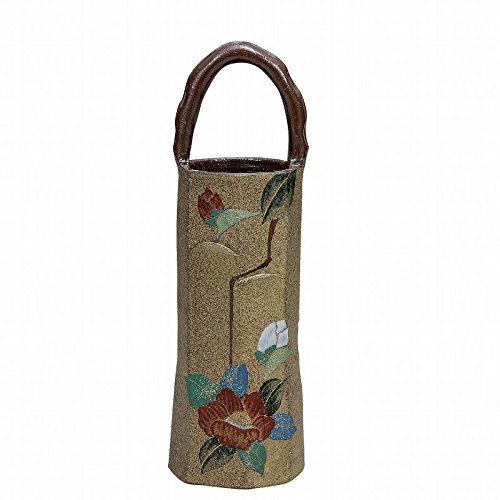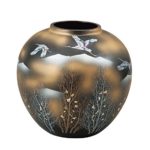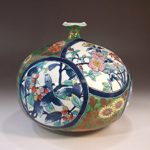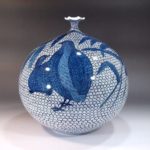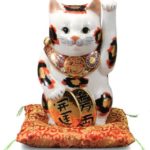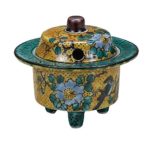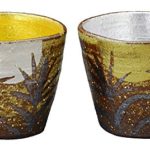Gold Kutani ware vase. Best for Ikebana and gift!
Gold is a color which has a sense of existence and gives us power. When it combines with a great shaped potter, there’s no way to become magnificent.
Just like other countries, gold was a symbol of power and wealth in Japan. The furnishings for people with high positions often had an abundant gold leaf.
Kanazawa City in Ishikawa Prefecture is famous for Kutani-yaki. And gold foil.
Not only that, the domain of Kaga which ruled around the prefecture in Edo Period (1603-1868) was one of the wealthiest feudal domain at that time.
Since it was influenced by Kiyomizu-yaki (Kyo-yaki), Kutani ware has various type of coloring. But gold coloring is the most remarkable style in the ceramic.
Don’t you think it is luxury that you can enjoy both of the traditional crafts of Kanazawa, Kutani-yaki and gold leaf?
It must be suitable for Ikebana or gift for someone!
Kutani ware vase with gold leaf on Amazon
!Limited Stocks!
Round Shape
11.8 x 11.8 x 11.4 inches
8.3 x 8.3 x 8.1 inches
(H) 9.4 X (D) 9.6inches
9.4 x 9.4 x 9.4 inches
(H) 12 X (D) 12.2inches
(H) 9.6 X (D) 9.8inches
(H) 5.9 X (D) 16inches
11.6 x 11.6 x 11.8 inches
9.7 x 9.7 x 9.2 inches
9.4 x 9.4 x 8.3 inches
9.8 x 9.8 x 9.1 inches
(H) 7 X (D) 7.3inches
(H) 10.6 X (D) 11.2inches
9.8 x 9.8 x 8.7 inches
7.2 x 7.2 x 6.7 inches
Vertically long Shape
(H) 9.4 X (D) 6.5inches
(H) 9.8 X (D) 6.1inches
3.7 x 3.7 x 11.4 inches
(H)4.3X(W)1.5inches
(H) 5.9inches x (W) 2.7inches
4.9 x 4.9 x 9.4 inches
Kutani-yaki (ware)
The history of Kutani-yaki began in 1655.
The first Daishoji Domain lord Maeda Toshiharu made Goto Saijiro learn the technique of Arita (Imari) ware and start the ceramic industry in his domain. The name of the village where the porcelain stone was produced was Kutani. So, they called the porcelain as “Kutani-yaki”.
The old Kutani ware has a feature of a green body. And the craftsmen took advantage of the color as one of the paints. Otherwise, the style using five colors, green, yellow, purple, red, and navy was famous old Kutani (Kokutani).
Though the pottery gained the reputation, the industrials disappeared from the Daishoji Domain just some 50 years after. The apparent reason hasn’t come out yet. But the researchers gather that it is the financial difficulties or policy shift of the domain.
After about 100 years of the passing, the movement of the renaissance came off. It brought forth the master craftsmen who created porcelain with red as based color or gold lines.
Since then, the Kutani ceramic plate and vase gained popularity around the world as a work of art. On the other hand, Japanese people love the pottery as a tableware for everyday life.
See more!
For special gift of Arita porcelain Japanese vase !






